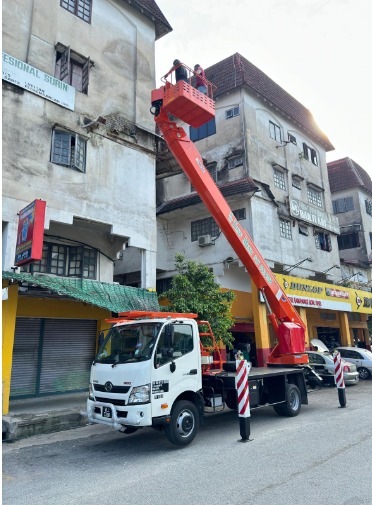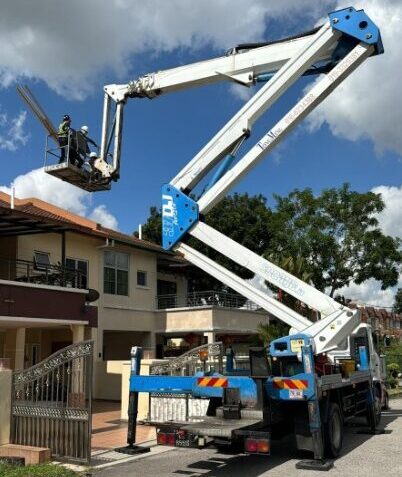Selecting a skylift to conquer towering heights can puzzle many, particularly when weighing rental versus purchase options. Skylifts, which professionals also call crane skylift, catapult workers into the clouds, making them ideal companions for tasks that embrace tall structures – from repairs to cleaning to construction adventures. Your perfect choice springs from two key questions: how frequently will this mechanical marvel serve you, and how long will each project unfold? When your project gallops quickly through time, renting illuminates the path forward because your money matches only your actual usage time. Rental companies shoulder the maintenance responsibilities, which brightens your workday further.
However, when your skylift requirements thunder through your calendar regularly, purchasing one might transform those rental dollars into lasting value. Let’s journey through the advantages and challenges each path presents.
Why a Skylift?
A skylift stretches up high, giving workers access to places they otherwise couldn’t reach. People use sky lifts for projects like painting buildings, fixing roofs, and cleaning high windows. Choosing between renting or buying one depends on how often and how long you need it. Let’s see why some might prefer renting a skylift while others decide to own one.
Renting a Skylift: Pros and Cons
Benefits of Renting a Skylift

1. Saves Money for Short Projects
Renting saves money for those who only need a skylift for a short time. Specifically, renting allows you to pay only for the days or hours you actually need the skylift, which, in turn, means avoiding a significant, upfront cost. Furthermore, renting frees you from the additional expenses of storing or maintaining the machine when it’s not in use, ultimately keeping costs low.
2. Uses the Newest Technology
Skylift rental companies often replace their machines with newer ones, meaning you can work with up-to-date skylifts. The latest models often come with helpful features, which can make work smoother and safer.
3. Comes with Maintenance and Repairs
Rental companies take care of repairs, so you don’t have to worry about fixing broken parts or dealing with extra costs. If the skylift needs repairs, the rental company can handle it.
4. Matches Each Project’s Needs
Different jobs need different kinds of sky lifts. Renting gives you the freedom to choose the right model for each job, whether it’s a small lift for tight spaces or a bigger one that can reach farther.
Drawbacks of Renting a Skylift
1. Costs More for Long-Term Use
Renting works well for short projects, but the cost grows if you rent often or for long periods. If you need a skylift all the time, it might cost more to rent it again and again.
2. Availability Issues
Sometimes, skylift rentals are all booked up, which means you may have to wait for one to be ready. Owning a skylift guarantees you have it when you need it without depending on others.
3. Switching Between Different Models
Renting different models each time means learning how each new machine works. This learning curve can slow down work since it takes time to figure out the controls and get used to each machine.

Buying a Skylift: Pros and Cons
Benefits of Buying a Skylift
1. Saves Money Over Time
Buying a skylift saves money in the long run if you use it frequently. Even though buying costs a lot at first, the cost per use lowers each time you use it, making it a valuable tool over time.
2. Always Available
When you own a skylift, you know it’s ready to use whenever your project requires it. No waiting or scheduling around rental companies’ availability, just the freedom to use it when needed.
3. Consistent Equipment, More Efficiency
Using the same equipment each time helps the team work faster and more safely. Familiarity with the skylift speeds up work and improves safety.
4. Customize and Control
Owning the skylift means you can make changes or adjust it to fit specific jobs. You also decide when to do maintenance, ensuring it stays in good working condition.
Drawbacks of Buying a Skylift
1. High Initial Cost
Buying a Skylift Means Spending a Lot Upfront. Buying a skylift demands a big amount of money right away, which may strain small businesses. Financing choices can help, but they still raise the overall cost.
2. Maintenance and Repair Costs
Owning a skylift requires you to tackle all repairs and upkeep yourself. Repairs pull on both your time and money, while regular maintenance keeps it safe and ready for work.
3. Storage and Transportation
Skylifts are big, and you’ll need a safe place to store them. Transporting them between sites also requires planning, which adds extra work and costs.
4. Loses Value Over Time
Like many machines, sky lifts lose value over time as newer models come out. This drop in value might matter if you decide to sell or replace it later on.
Industry Trends: Modern Skylift Features
Newer sky lifts come with many features to make work safer and easier. Here are some new trends:
- Electric-Powered Skylifts: These lifts are perfect for indoor work because they don’t make noise or pollution.
- Portable Models: Modern designs focus on making sky lifts easier to move from site to site.
- Improved Safety Features: New models include automatic controls and safety systems, making them safer to use.
Conclusion
Ultimately, the choice between renting and buying a skylift depends on what you need, your budget, and the nature of your projects. On one hand, renting offers flexibility and freedom from maintenance, making it ideal for short-term needs. On the other hand, buying provides a reliable, ready-to-use skylift and can lead to long-term savings if you need it frequently. Therefore, it’s essential to carefully consider each option in order to determine what works best for you.
